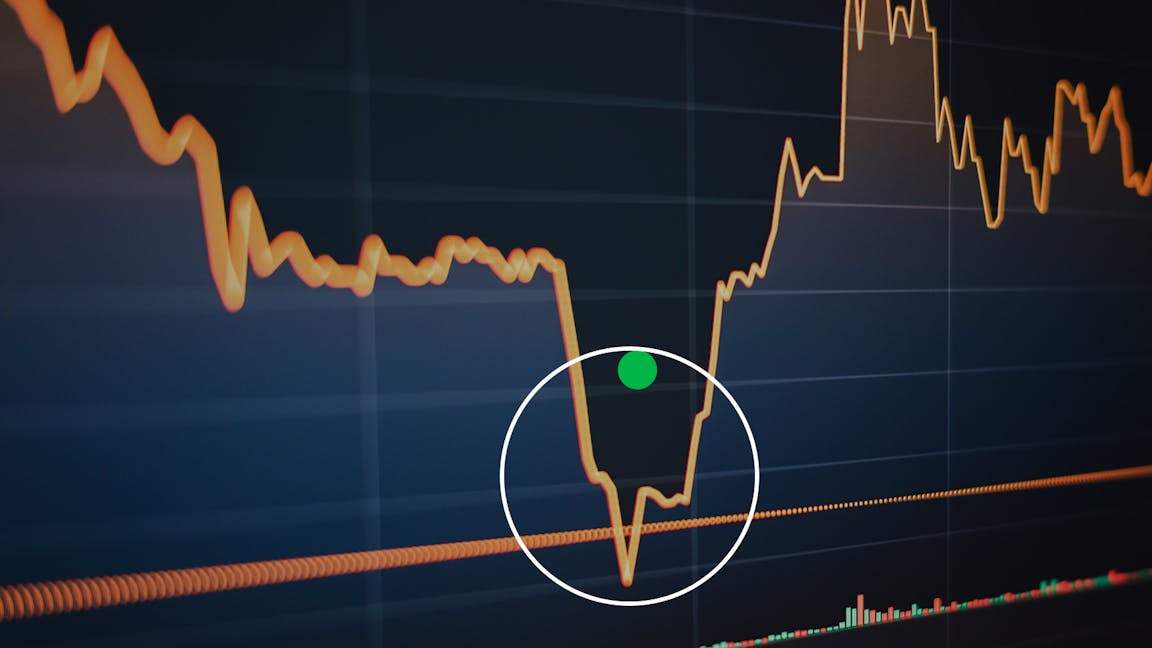
After a positive start to 2023, global markets and investors are preparing for some further stock market volatility. Here, we look at what’s behind equity market fluctuations this week and provide an update from the Nutmeg investment team.
The Fed’s dilemma
Released on Tuesday, latest figures showed that US ‘core’ consumer prices – excluding volatile items such as food and energy – climbed by 0.5% in February. This was slightly above expectations and is food for thought for Federal Reserve (Fed) policymakers ahead of next week’s scheduled meeting (21st and 22nd March) in deciding whether to implement a further hike in base interest rates.
As has been the case for some months, the Fed must tread carefully between cooling inflation and maintaining a healthy economy. Stories this week relating to the banking sector – which we’ll discuss shortly – have placed the emphasis firmly on the latter.
As of Wednesday (15th March), markets were marking the probability of a 0.25% rise in interest rates next week at around 40%, down from around 85% on Monday. This suggests that investors are fairly split on whether the Fed will raise rates or not next week – and markets hate uncertainty.
Previously, there was even some discussion around a potential 0.5% rise in rates, which followed a speech by Fed chair Jerome Powell who cautioned that interest rates are likely to head higher than policymakers had expected, with the Fed’s fight against inflation far from over.
What’s the problem with rising interest rates?
In just the same way that rising interest rates will have an upside and a downside for people and their personal finances – savers will usually benefit from higher interest on their savings, while borrowers will face higher repayments on their loans or mortgages – rising interest rates can provide difficulties and opportunities for businesses and banks. This has been acutely witnessed in the last week with the events that impacted Silicon Valley Bank in the United States.
Silicon Valley Bank (SVB), the 16th largest US bank, was the bank of choice for many high growth tech companies and tech start-ups in the US. The company provided banking services to a large proportion of the country’s venture capital backed life sciences and technology companies. As interest rates have risen, so too have costs for these companies, while funding has become more scarce for high growth, high risk companies, given the alternative returns now on offer from safer assets such as government bonds. That means these companies have drawn down more of their cash held on deposit at banks such as SVB.
Most banks have a diversified client base of different individuals and companies – much like investors diversifying an investment portfolio. This generally helps protect them from the need to meet large, broad-based withdrawals, but Silicon Valley Bank’s client base’s similarities presented problems when withdrawals in deposits picked up.
That’s because banks don’t simply hold all of their customers deposits in cash. They lend some of these deposits out to other customers, and anticipating what they might need in the short term to meet customers cash needs, they also invest excess deposits in order to generate a return.
This is ordinarily a relatively safe exercise, because the type of securities which banks purchase are considered among the safest – such as government bonds. If they hold these bonds until they mature, they don’t need to worry about losses in the interim (as interest rates rise for example), because bonds pay out at ‘par’ (or face value) when they mature.
But, if they get the calculations wrong on how much cash their customers will need in the short term, and they need to sell some of those invested deposits in order to facilitate their banking activity, then they face doing so at market prices. After a year when bond markets faced their worst losses in 25 years, when SVB was forced to sell some of its investments to meet rising withdrawals, it was obliged to report a heavy loss on them. That news undermined confidence in the bank, causing further withdrawals and sparking fears of a bank run: a term that describes a large number of customers withdrawing their deposits at the same time, fearing for the bank’s solvency.
By Sunday evening, US regulators had stepped in to seize control of the the bank and backstop customer deposits in an attempt to restore confidence.
Could we see a repeat of the 2008 Global Financial Crisis?
At this moment in time, we don’t think this is reflective of systemic risks in the financial sector. SVB’s problems were relatively idiosyncratic and represent the increased pressures on certain sectors of the economy – like tech – that relied on low interest rates for the past decade but are now facing a different environment. So, we don’t think they were symptomatic of a wider problem with the financial services sector, but of course events like this can be unnerving for investors of all types, and so we expect some volatility to persist as investors take stock of events and recalculate risks.
But, thanks to regulatory actions, particularly in the US and UK, the global banking system is far stronger, safer, better capitalised, and more liquid than it was during the 2008 global financial crisis, especially for large financial institutions. For instance, the sale of SBV UK to HSBC, which was facilitated by the Bank of England, evidences the effectiveness of the UK’s bank resolution regime, which was introduced after the financial crisis.
In 2021, Nutmeg was wholly acquired by J.P. Morgan, which has the financial strength and a fortress balance sheet to be there for clients in times of dislocation and disruption. J.P. Morgan is extremely diversified and well capitalised and will serve as a beacon of strength in any crisis.
How are the Nutmeg portfolios positioned?
Nutmeg portfolios remain highly diversified, with no direct investments in banking stocks. The nature of our broad exposure to stock markets means that we do hold financial stocks in our portfolios (via ETFs), given the economic importance of the financial sector. However, this exposure is predominantly larger diversified global banks, rather than regional banks.
Our multi-asset investment approach is designed to spread risk across regions, sectors, and companies for this very reason – to avoid overexposing your investments to any single company or sector.
Our overall portfolio positioning remains relatively cautious on equities, where we recently rebalanced to ensure we maintained a positioning which is lower than our longer-term allocation across our portfolios. We also exited our overweight exposure to a US financial services ETF within our high-risk portfolios in December 2022, though we still have exposure to financial corporations and banks as part of our global equity allocation.
When it comes to fixed income (bond markets), we have remained cautious here also due to the expectation of further interest rate hikes, though we now foresee these expectations will be tempered in the days ahead.
As always when global financial markets experience volatility, Nutmeg portfolios will not be totally immune to market losses and the fall in stock markets in the past week has meant that we have given back some of the positive returns generated since the beginning of the year. However, the globally diversified nature of our investment portfolios and exposure to a wide range of asset classes, regions and sectors is designed to help mitigate losses when markets fall.
Is the investment team taking any action?
The investment team continues to actively monitor the situation. We have recently increased our portfolios exposure to US dollars (a typical safe haven asset), but the team will keep you updated with any further developments and make strategic portfolio adjustments as they see appropriate.
Risk warning
As with all investing, your capital is at risk. The value of your portfolio with Nutmeg can go down as well as up and you may get back less than you invest. Past or future performance indicators are not a reliable indicator of future performance.
